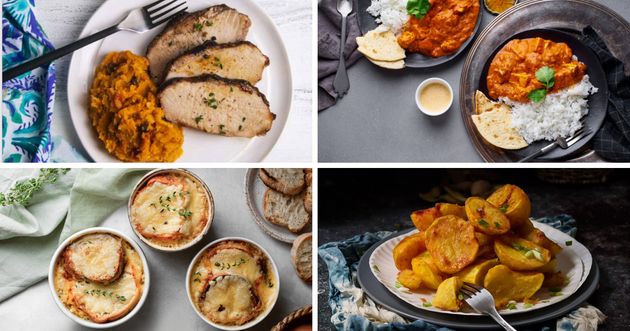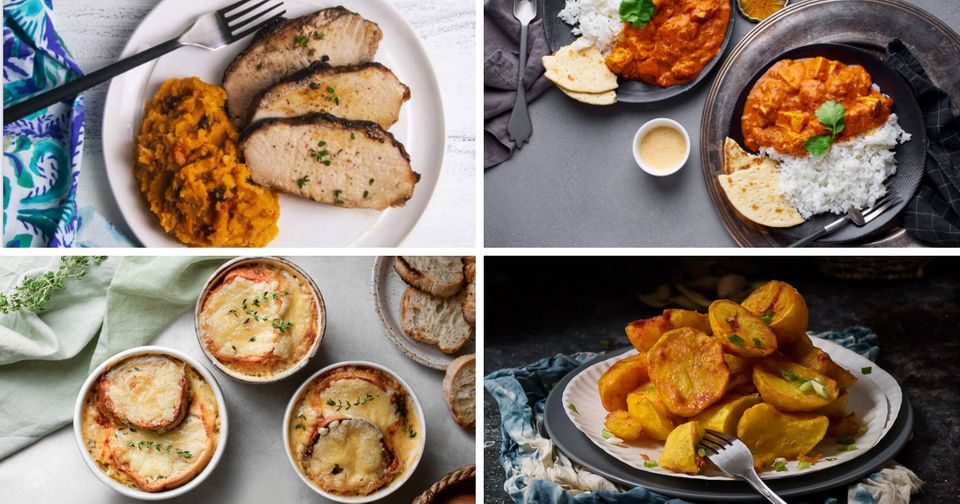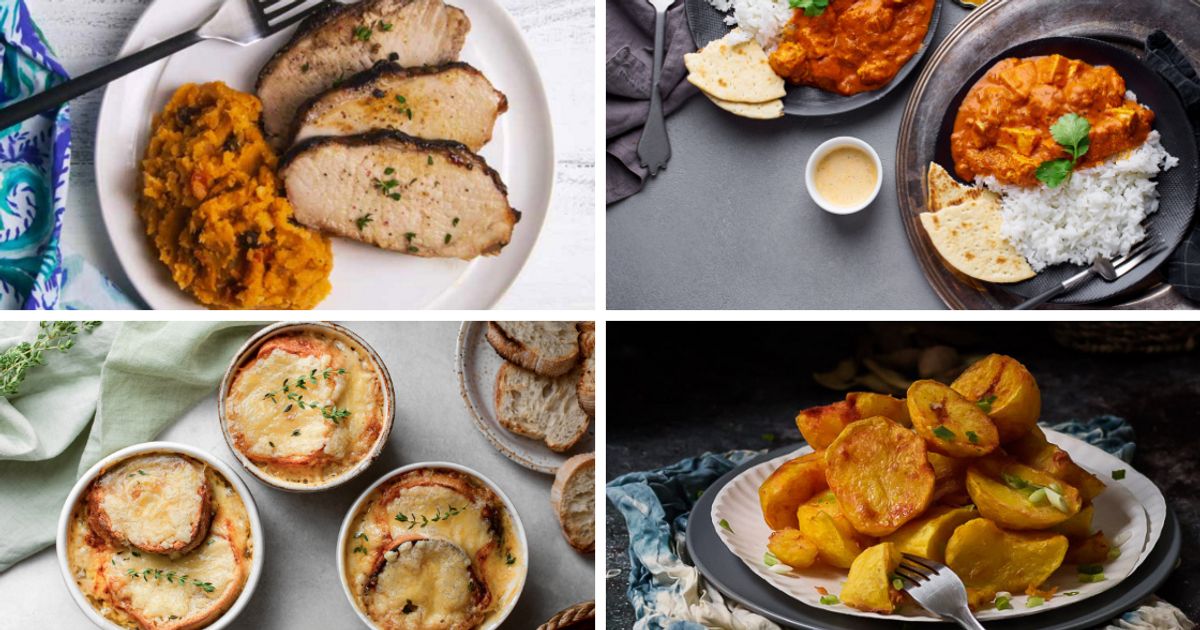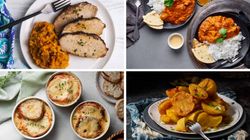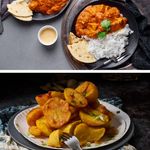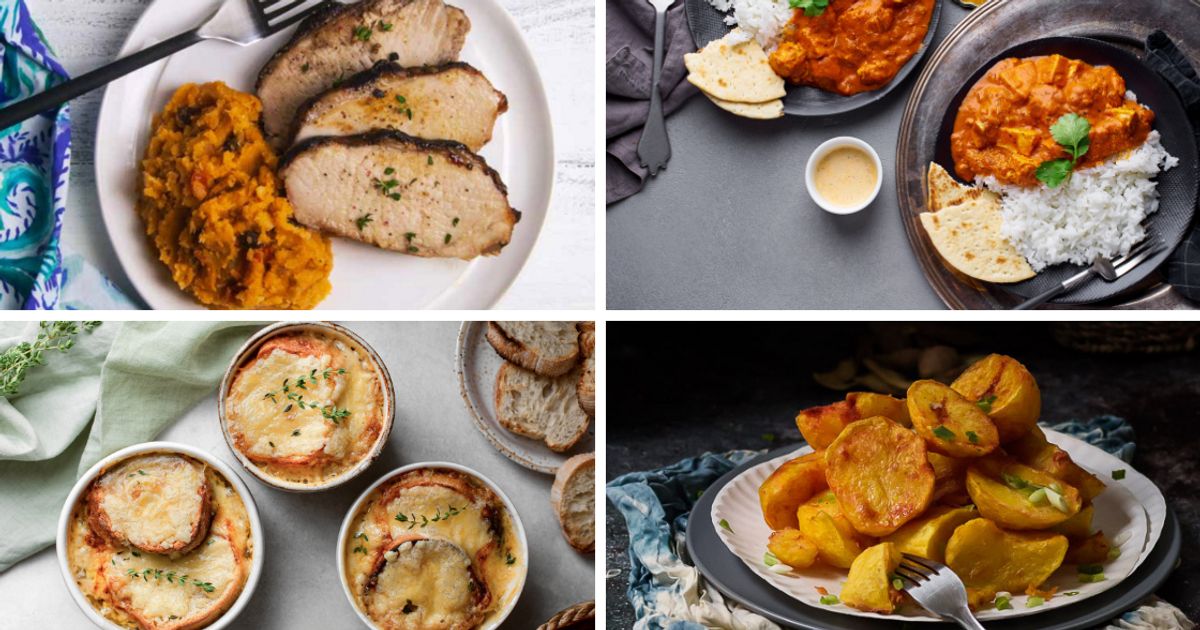While many familiar Christmas traditions originated in Western countries, people from all around the world and from different cultural backgrounds celebrate the holiday with the same spirit of gratitude and togetherness. No matter where, recipes passed on through generations are central to family gatherings. From callaloo to chicken tikka masala, find out what renowned chefs and food influencers around the world are cooking on Christmas Eve.
Mexico
Martha Ortiz Chapa is the head chef at Tuch de Luna at La Casa de la Playa in Riviera Maya. She was the chef-owner of Dulce Patria, which had been named one of the 50 best restaurants in Latin America and the best restaurant in Mexico City before closing earlier in the Covid-19 pandemic. She has also served as a judge on “Top Chef Mexico,” and in 2020 was named one of the 40 best chefs in the world.
Advertisement
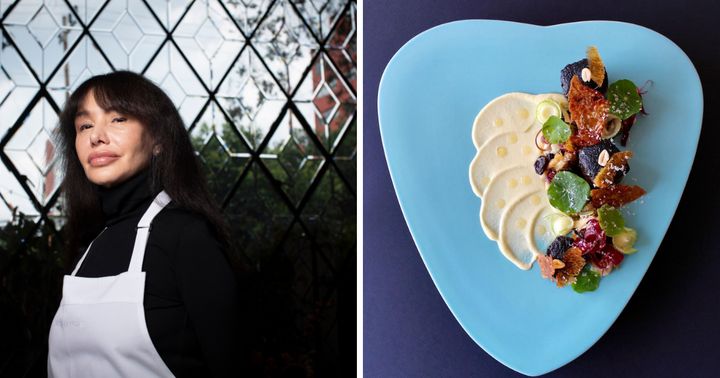
Courtesy of Martha Ortiz
Our December traditions begin with the Posadas (a religious festival held from Dec. 16-24), which lead the way to the grand celebration of Christmas Eve. During this time, Mexicans hang seven-point-star piñatas (the peaks representing a different capital sin, including gluttony) made with contrasting coloured tissue paper and filled with pieces of sugar cane, tejocotes (a fruit), orange wedges, peanuts, candies and sugar-coated almonds. We blindfold the guests, who take turns hitting the piñata until someone breaks it, in celebration of the predominance of virtue and abundance.
On Noche Buena (the night that is good), aka Christmas Eve, I elegantly present these crafts to my guests. I usually use a dark tablecloth as a canvas and decorate it with wooden kitchen utensils, such as grinders, spoons and saucepans, surrounded by colourful flowers. I personalise each guest’s place on their plate with a small piñata, which holds inside a traditional sweet or piece of candy and a message of friendship and love, in the hope that they will take it home with them and, when they break it, the abundance of affection, bonds and the celebration of life will grow.
As a proud Mexican, I begin with traditional dishes such as romeritos (tender sprigs of seepweed) with cactus strips, and mole (made with at least 50 ingredients) seasoned with dried shrimp. I serve a salad called Noche Buena, which is prepared with diced jicama, apple, beet, orange wedges and crunchy peanuts. For main, we have pork leg in spicy pulque marinade. I wash it down with my personal favourite, a punch of tejocotes, tamarind, jicama pieces, piloncillo (a raw form of pure cane sugar), guavas and spices and a touch of hard liquor.
Advertisement
I add the leftover punch to the mother sauce to prepare a fruity mole and serve it with turkey pieces that have a crackling-like crunchy skin. And, if there’s some left over, I make a delicate cheesecake to remember all the flavour of the Posadas days.
With this celebration of classic and modern dishes, I honour my grandmother’s cooking and think about the great wealth of ingredients from Mexico. This is how, surrounded with piñatas and sweet smiles, I wish that each Christmas Eve will become an early memory of tradition, lineage, and my pride of being a female Latin, Mexican chef.
St. Thomas, U.S. Virgin Islands
Julius “The Chef” Jackson is a professional chef, Olympian boxer, community leader and author of the cookbook “My Modern Caribbean Kitchen: 70 Fresh Takes on Island Favourites.” He currently offers private interactive culinary social events through “The Chef’s Cooking Lab” and is the head chef and manager at the nonprofit My Brother’s Workshop Bakery and Café in St. Thomas.
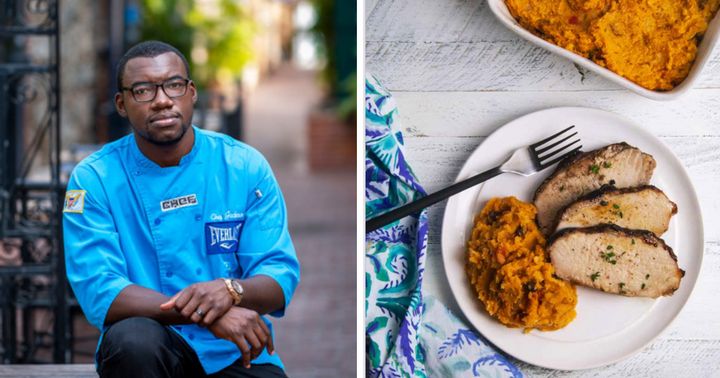
Courtesy of Julius Jackson
We have such a melting pot of cultures in the Virgin Islands that we have created our unique mashup. You can see this to be true in the way we celebrate the Christmas season.
Advertisement
It’s very traditional for us to have callaloo as a starter for the Christmas Eve meal. This stew made from okra, spinach and pork is influenced by African cuisine. My personal favourite is the seafood version, which I make with shrimp, conch, lobster and saltfish. The warm green goodness gives me the feeling of the Christmas season on a tropical island.
I also love roasting pork for our Christmas Eve or Christmas Day dinners. This dish came about from our Puerto Rican brothers and sisters that migrated to the U.S. Virgin Islands, and we adapted it within our culture. I generously rub the butt, shoulder or the whole pig down with seasonings and cloves, make incisions into the skin to allow the seasonings to penetrate inside the meat and under the skin. Then, I roast the pork for 5-6 hours until the skin is super crispy. This is one of my all-time favourites dishes because I love the tender and salty meat with the crispy skin.
The guavaberry fruit has also become a major part of our tradition here in the Virgin Islands. The slightly sweet- and tart-tasting fruit that looks like red and purple blueberry comes from our West Indian neighbours. During Christmas time, we consume guavaberry rum or incorporate it into desserts, such as homemade guavaberry tart and guavaberry cheesecake.
After dinner, we carol calypso/quelbe Christmas tunes at home and around our neighbourhood, stopping at homes of friends and family members for snacks and rum.
India
Vikas Khanna is an Indian American chef, restaurateur, cookbook author, filmmaker and humanitarian. He grew up in Amritsar, India, served as a judge on “MasterChef India” and received a Michelin star for six consecutive years for his New York restaurant Junoon. He has authored over two dozen books and directed and produced several films.
Advertisement
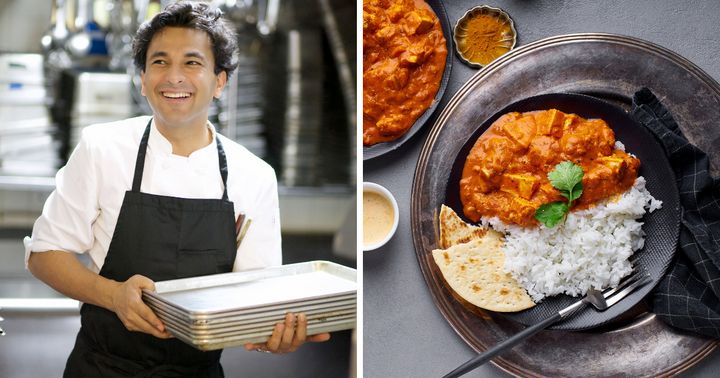
Courtesy of Vikas Khanna
Christmas Eve is celebrated in India with as much fervor as all other religious festivals, especially more so in the northern state of Punjab, where I hail from. For us Punjabis, it is one more occasion to celebrate and feast on good food.
We usually plan an elaborate dinner with near and dear ones (which in Punjab can be a lot of people). My special guests on Christmas Eve are all the elderly grandparents who I look forward to cooking for. Most of the dishes I cook are keeping in mind their palate and preferences, so it’s an Indian-style Christmas dinner. It is also my way of expressing my gratitude towards my grandmother, who was my first culinary teacher.
December yields some of the best farm produce, giving me an array of choices of ingredients. The weather in Punjab is cold this time of the year, so the dishes are served warm and spicy.
I make several dishes using paneer (Indian cottage cheese), because paneer and Punjabis are made for each other. We are a dairy-rich state! So, I make paneer tikka masala for appetisers, stuffed paneer paratha, paneer and mixed vegetables, and a curry. For the meat eaters, I make a chicken version of the same dishes.
Advertisement
Also, instead of the popular regional Punjabi dish, chole bhature, which is served at most festive occasions, I prefer making bo wale kulche, which non-Amritsaris find smelly because the dough is double-fermented, but I find them aromatic and absolutely relish them. Some of these recipes are in my book, “Amritsar — Flavours of the Golden City.”
After a hearty dinner and loads of friendly conversations, it’s time for desserts. The one dessert that is mandatory at my Christmas Eve dinner is whipped fruit cream with fresh seasonal fruits. It reminds me of my childhood when my grandparents would take me and my siblings out for this treat. Making the same dish for my special guests feels like completing the circle.
The happy faces of my guests, especially the grandparents, fill my heart with joy and energise me for the new year ahead.
France
Herve Palmieri (who goes by Hervé Cuisine) is a Paris-based videographer, food blogger and author of “Easy and Amazing Desserts” and “Easy Aperitifs With Friends.” His YouTube channel featuring cooking tutorials has over 1 million subscribers.
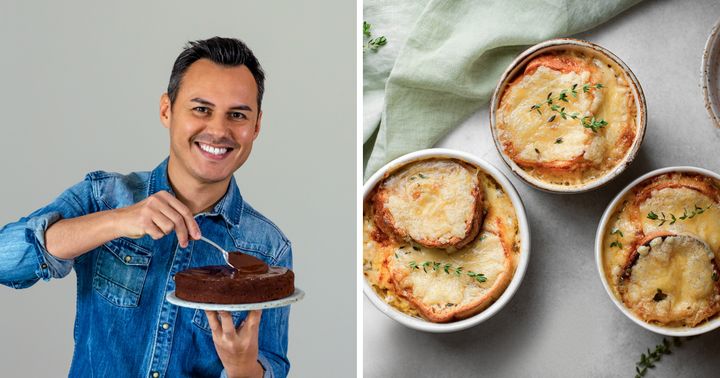
Courtesy of Herve Palmieri
Advertisement
The first thing that comes to mind when I think about Christmas Eve is my family. We all live in Provence in the southeastern part of France. I have one son, two sisters and six nephews and nieces. In France, Christmas is a very special time when families come together, forget, forgive and give. We always try to get together on Christmas Eve, taking turns to either host or rent a place in the Alps or in the national park of Queyras.
Everyone participates with the Christmas Eve meal planning. The kids help prepare puff pastry treats for appetisers that we cut out in Christmas tree shapes and fill with cheese, nuts, honey and raisins. They also like making tapenade (olive paste that’s popular in Provence) and goat cheese mix. Then, we display everything on the table like a buffet so everyone can taste a bit of everything.
Traditionally, we also serve some poultry and several sides. For instance, we would include grilled veggies like glazed carrots and sprouts, pureed parsnips or sweet potatoes with spices. For dessert, we have a tradition to serve two cakes: Black Forest, that I’ve been doing according to my mom’s recipe for years probably since I was 10 years old, and a buche, which is a more traditional recipe often made with chestnut puree and chocolate (or you can make it more exotic with mangoes and coconut).
Both of my parents, who come from Vietnamese and Italian origins, my sisters and I, love to cook or bake. So, for Christmas lunch, we prepare Vietnamese fried spring rolls, a recipe my grandfather passed on to my mother when she was a young girl and needed to help prepare the meals for her family of six children. For Christmas Day dinner, we usually make a typical French onion soup made with yellow or white onions, olive oil, vegetable broth and a crust of melted cheese and croutons with herbs like thyme and rosemary. It is very simple, tasty and supposed to help you cleanse your body after a heavy meal.
Christmas Eve is not all about eating, though. We like to play some group games, like the Wolf, which is a strategy game opposing wolves and villagers that you play in a circle in dim light, even though my father always falls asleep before the end of the game! We also go for a late walk outside in the little village in the Alps called Aiguilles en Queyras, even if it’s freezing, because you know, we do eat more than usual on that night.
Advertisement
Uganda
Sophia Musoki is a Ugandan food writer and food photographer. She is author of “A Kitchen in Uganda,” one of the most notable food blogs in the country, and three e-books, one of which received a Gourmand World Cookbook Award. Musoki also produces and hosts the podcast “Our Food Stories” where Ugandans share food stories.
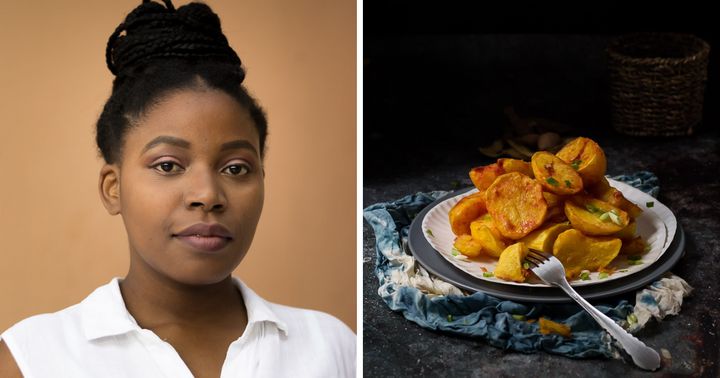
Courtesy of Sophia Musoki
For my family, Christmas Eve is a time when everyone arrives at my grandparents’ home in Kasese, in western Uganda, from various parts of the country to end the year together. Their home is situated on the edge of one of the many Rwenzori ranges with a dizzying but scenic view. Banana and coffee tree plantations surround the house, giving it a lush green backdrop for our African Christmas.
Christmas Eve is more of a preparation day for me and my family. We have 15-20 people crammed in the small kitchen, which is located about 5 meters away from the main house. Each of us has an assigned task. Older male relatives set up a corner to slaughter a mature goat for the meal, while the female relatives peel potatoes, bananas and yams. In another corner of the kitchen, my cousins, nieces and nephews shell fresh beans to make soup, using beans my aunts bring from either their gardens or the market. I love getting involved in the chopping, cutting, cleaning and slicing of all the condiments like tomatoes, onions, local garlic and garden eggs.
While everyone is busy, my grandmother puts on a big pot of green banana and black beans katogo (a stew of starch and a protein pottage) on fire to simmer for the evening meal.
Advertisement
On Christmas Eve, we also spend some time selecting cookware, such as heavy cast-iron pots for steaming and clay pots for stewing meat and boiling beans. If we don’t have enough, we either go out to the market and purchase some or borrow from generous neighbours.
Aside from cooking, this is also a time for the family to share good news, like the birth of a child, graduation, a wedding anniversary or a baptism. This cheerful atmosphere is filled with children playing hide and seek, which is more fun to do at night and among many people. The adults tell stories of their travels while neighbours drop by occasionally to join in on the conversation. We generally serve visitors fresh fruits. My favourite part of Christmas Eve is the camaraderie of the meal preparation. As we roll into the evening, we leisurely peel, slice and eat fruits like mangoes, sugar cane and jackfruit, which I believe “takes a village” to do. This keeps us occupied until the katogo is served on large shared trays, which is often very late into the night.

